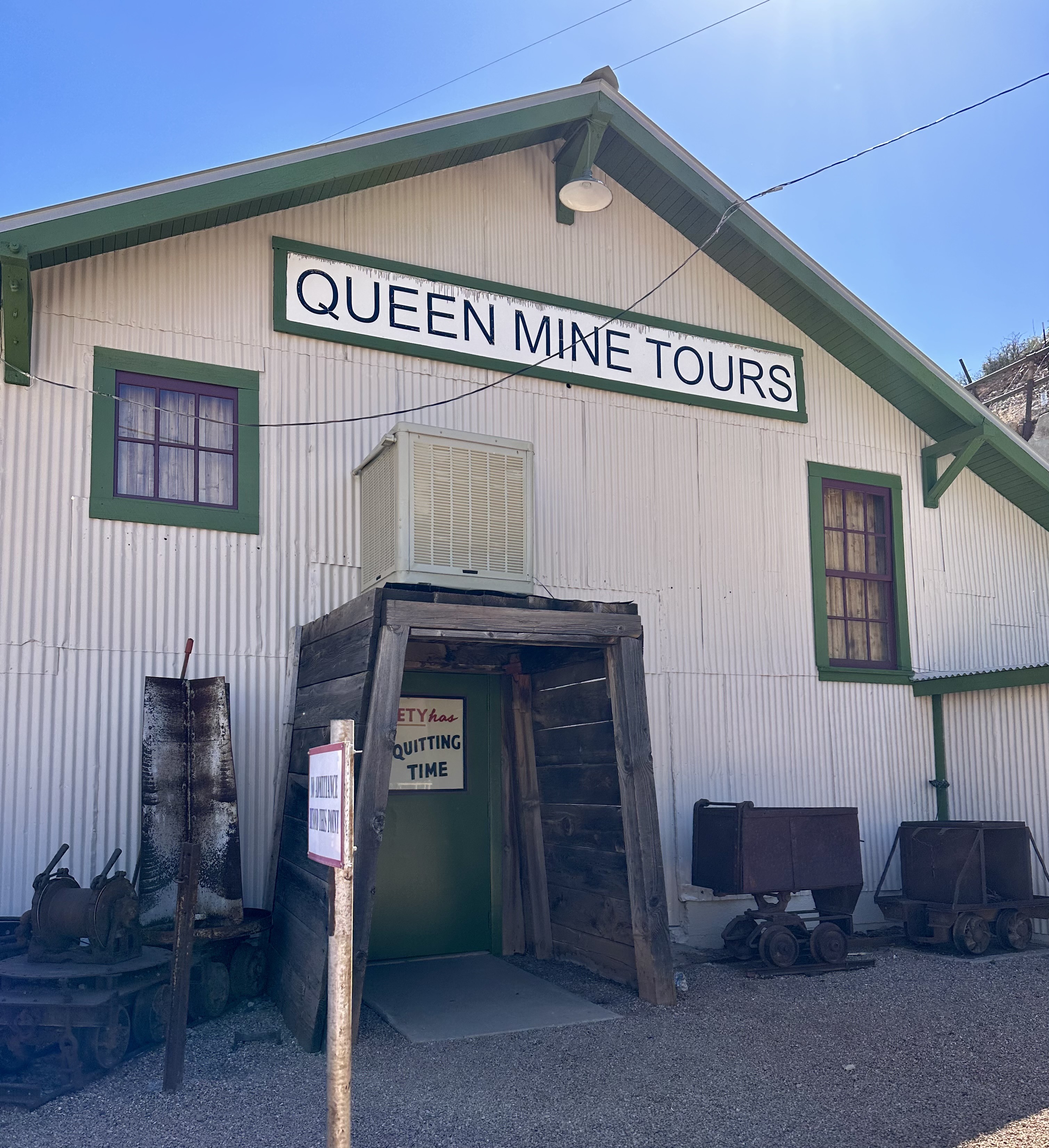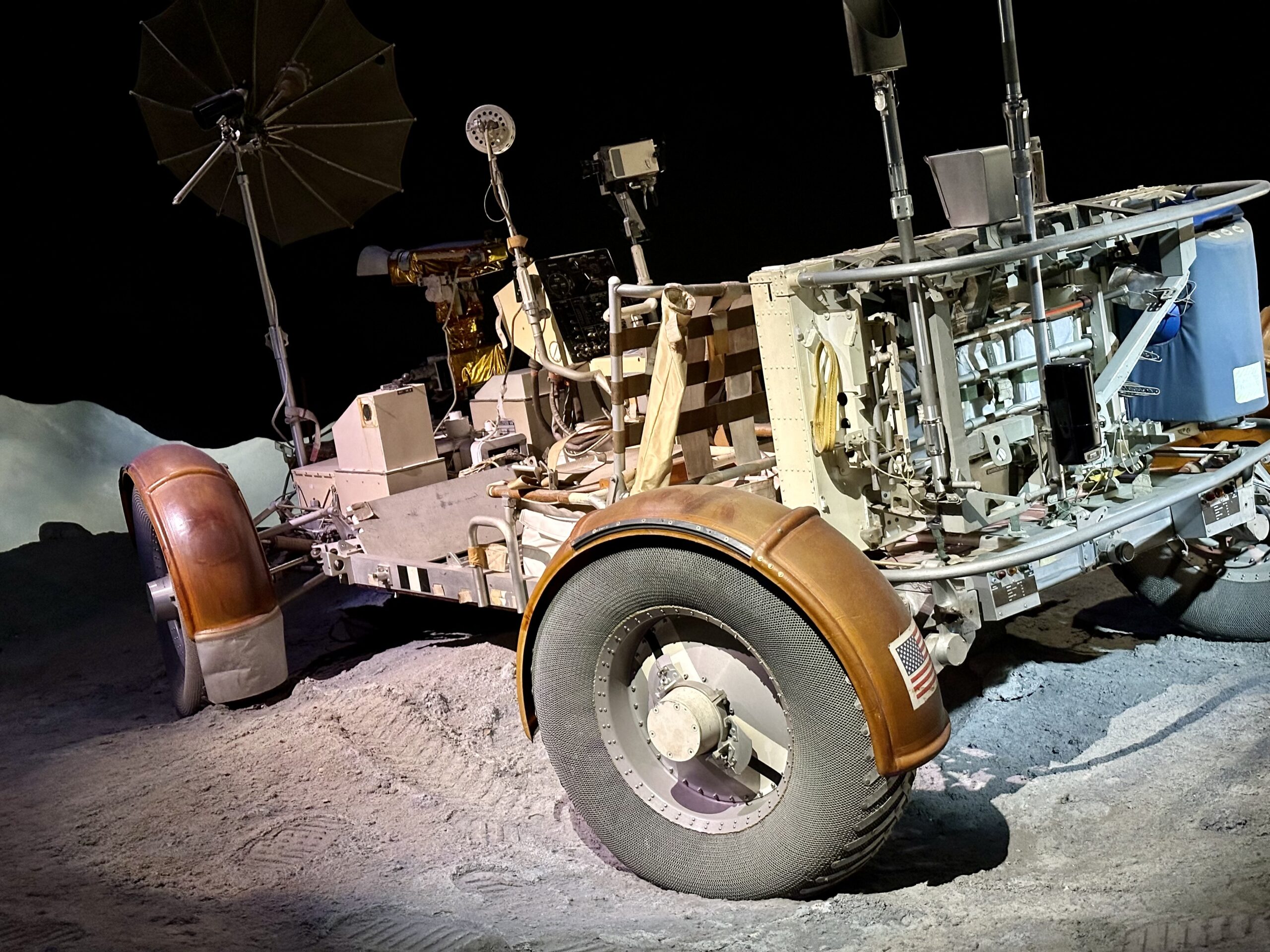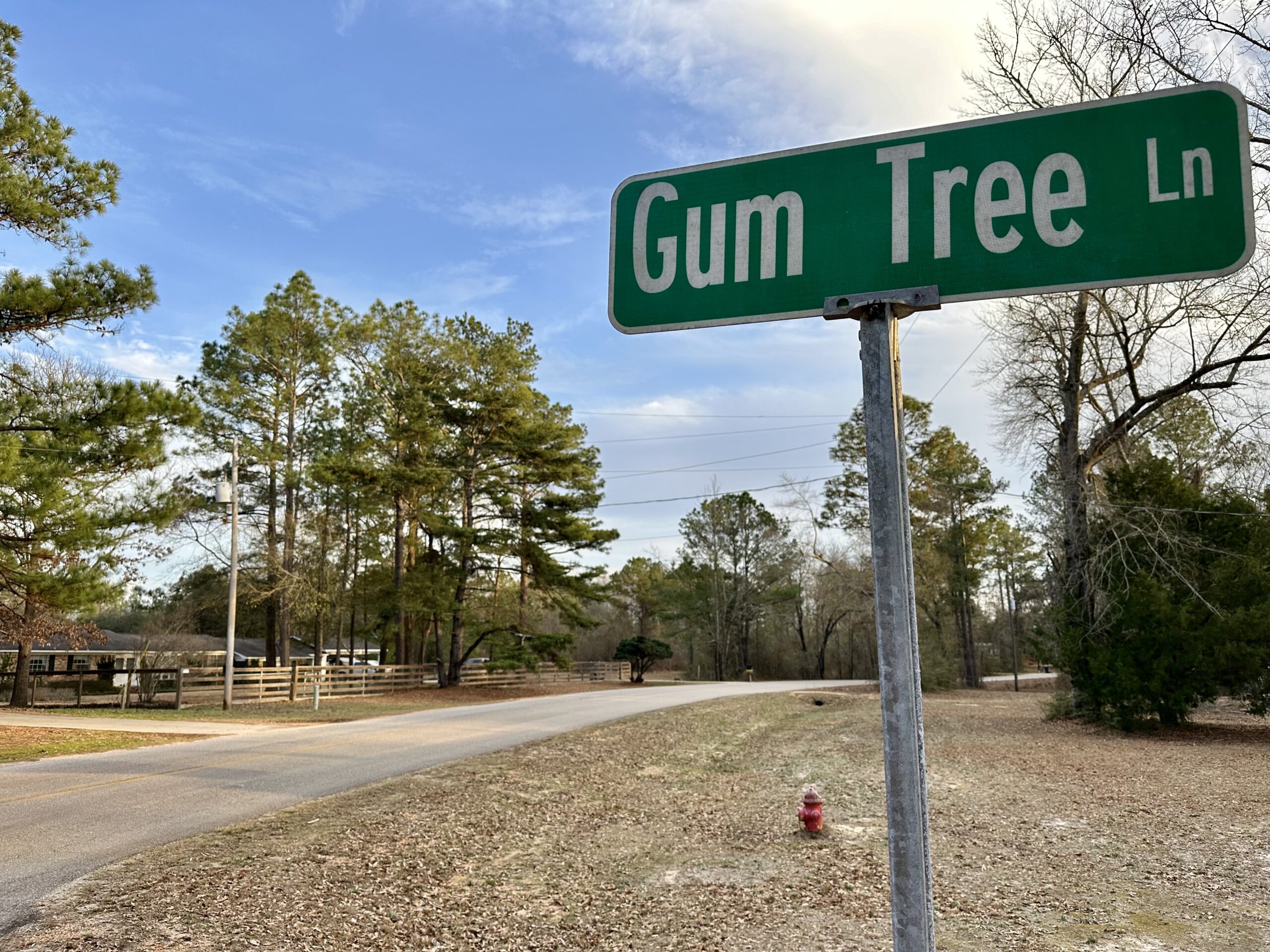“ULTIMATE SURVIVAL: DESERT DREAMERS BUILD A MAN-MADE WORLD – ON a high plateau in the Arizona desert, construction has begun on a $30 million project designed to test the feasibility of self-sustaining manned bases on the Moon or Mars – or on an earth ravaged by nuclear war.” – NY Times, May 27, 1986
“Construction of the main facilities began in January 1987 and concluded in September 1991.” – Biosphere 2 (unless otherwise noted, all quotes come from the information from our tour of the Biosphere 2)

Space Biosphere Ventures purchased land just north of Tucson in 1982. They built the Biosphere 2 (they considered Earth to be Biosphere 1) with the goal of simulating different ecosystems – oceans, rain forests, marshlands and deserts – that people live in on Earth. Today it is a research center managed by the University of Arizona. “It remains the largest closed ecological system ever created.” – Wikipedia
We purchased our tickets online and downloaded the app for the tour ahead of time. Cell service is almost non-existent out here so we recommend you do the same. You can find more information about the Biosphere 2 or purchase tickets here.

Once you check in at the Visitor Center your downloaded app provides a self-guided tour through the property, beginning with the surrounding area.
“Biosphere 2 is located in one of the most amazing settings in the world.”


“When designing Biosphere 2 the architectural team wanted to build something that was futuristic in appearance and function.”

“The first experiment, also known as mission 1, lasted from September 1991 to September 1993 in which four men and four women lived inside Biosphere 2. It was an outstanding success in engineering terms but fell short as a sustainable systems.” There was also a mission 2 in 1994.


Once the men and women of first mission entered the front doors (see arrow above) the doors were sealed for two years.

Just before entering the Biosphere we had a chance to see one of the current research projects taking place next to the grassy area out in front of the Biosphere. “At the University of Arizona, scientists are working on agrivoltaic projects just outside the Biosphere 2, where climate change has been the main focus of interdisciplinary research in recent years.”
We learned that agrivoltaics is a fancy way to say that agricultural production, such as crop or livestock production, is done underneath or next to solar panels.

“The Human Habitat was a 25,000 square foot, five-story structure with a foundation slab at ground-level. The upper level was where the Biospherians prepared and ate their meals, had their own apartments, and where a command room with personal offices, laboratories, storage areas, and a medical lab was located.”

While the Biospherians entered through the main entrance on the ground floor, our tour began in the kitchen on the second floor of the building.

“Once every 8 days each crew member cooked for everyone. Each cooking “tour of duty” started with dinner and included breakfast and lunch the next day.
In addition to a modern kitchen there was a well equipped processing area in the basement (thrasher, grinding mills, press, seed cleaners, drying ovens, storage bins, etc.). Domestic animals (chickens, goats and pigs) provided some fats and proteins in the small amounts of meat, milk, and eggs available.”

The Biospherians experienced a high-fiber, nutrient-dense, low-calorie (1,800 to 2,800 per day) diet. The first crew had a three-month supply of food in storage when they entered the Biosphere and consumed it much quicker than planned.”

“Breakfast and lunch were always served in the dining room, however dinner was a movable feast and was often taken on this balcony (see below), which became known as the Cafè Visionaire.”



Next to the kitchen was the medical lab. “The first crew physician was Dr. Roy Walford, who checked each Biospherian every 8 weeks. These regular physical exams included a routine check of weight, pulse rate, blood pressure, blood work, body temperature, eyes, ears, throat and reflexes.”

“Each Biospherian had his or her own 2 story apartment. There were 10 single apartments (16 x 16 feet or 4.9 x 4.9 meters), the living room was downstairs with an upper loft area containing a queen-size bed and a dresser.”
“Each crew member decorated their apartment to their own personal taste. Some became libraries while others, like the one you see through the window (below) became an artists’ studio.”

“Contact by phone and computer to family and friends in the outside world made the isolation a little easier to endure.” You can see a telephone on the desk in the picture above.

A library was located on the 5th floor at the top of the spire just inside the front doors. We read that is was rarely used. When we looked up the spire we could understand why – a lot of stairs and no elevator!

On the main floor, one level below the kitchen and apartments, we began to learn about LEO – Landscape Evolution Observatory. It is the world’s largest laboratory for Earth science experiments. It was designed to learn things like, “when it rains in the mountains, how much of that water ends up downstream for us to use? How do environmental changes impact the quality of that water?”

Below is a scale-model of LEO we saw on the ground floor of the Biosphere. It is approximately seventy times smaller than the real thing and took about three months to complete. It is hard to tell in the pictures but the ground slopes downward. Under the ground are 1,800 sensors which monitor how water moves down the slope through the earth.

And here is the full scale LEO project seen from outside the Biosphere.

The LEO space was originally used as the place where “Biospherians grew most of their food…”

After learning about LEO, we moved on to the Orchard. “During the sealed experiments, the Biospherians didn’t have any processed sugar in their diets. Most of their sweet cravings were satiated by eating the many varieties of fruit they had grown inside the Orchard, the Rainforest, and the Savanna. Because of the number of sweet fruits grown in the Orchard, it was fondly referred to as the “Sweet Shop”.

“It soon became clear that raising food in Biosphere 2 was a major challenge. The weather was cloudy for the first few months of the mission, stunting the growth of crops…Then Biosphere 2 began to lose oxygen because the soil had spawned an explosion of oxygen-gulping bacteria. The crew felt as if they were living at 14,000 feet. A truckload of liquid oxygen finally saved them…Meanwhile, the ecosystem was in flux. The hummingbirds and honeybees died, leaving the crops unpollinated. Nematode worms and broad mites attacked the crops. Cockroaches reigned.” – NY Times, May 27, 1986

The Freight Farm is a new project. It is “a vertical farming project, in collaboration with the private company Civic Farms, in an effort to develop an indoor plant growth cycle with LED lamps configured to specific wavelengths aimed at increasing water efficiency, producing zero farm runoff, with no pests or pesticides, and zero effect from external weather conditions.” – Wikipedia

“On a sunny summer day, rising terperatures could cause irreparable damage to the plants in our biomes within 20 minutes. To ensure that doesn’t happen, the Biosphere 2 has its own power plant, called the Energy Center. “Within the center are two large generators. The primary generator uses natural gas for fuel with a diesel-based generator for back-up. There are also boilers to heat water and chillers to cool water. The large towers to the right are used to cool air by drawing air across a column of water.”

One of the most interesting features are the lungs of the building. “At either end of the Biosphere 2, you will see large geodesic dome structures known as the lungs. The lungs are one of many great engineering feats of our living laboratory.
Biosphere 2 was originally designed to be isolated from the outside environment, so there are no pressure relief valves to regulate changes in pressure. Since it was so well sealed during the closed-system experiments, it was entirely possible that the lab could have exploded as the sun caused the air inside to heat and expand. Conversely, it could have imploded as the air inside cooled and contracted.
Inside the lungs, a giant synthetic rubber membrane with a circular metal disk floats freely on a cushion of air to rise and fall as the air expands and contracts.”

The lungs were quite impressive to hear about. If you want to learn more, here is a video of a tour of one of the lungs. (Note: fast forward to about the 7 min. mark to see the lung in action)

Back inside the Biosphere our tour took us through different ecosystems. The first one, was designed to simulate an arid costal fog desert, which is a type of desert that has adapted to environments with higher levels of humidity. According to our tour, this space is designed to simulate the coastal region of Baja California.



The thornscrub area was designed to be a transition area between the deserts and the more tropical regions. It was very shady and cool.

“The Mangroves situated between the man-made ocean and coastal fog desert are modeled after the subtropical Florida everglades.”

The Lower Savanna was “originally planted with lots and lots of plants. But over the years they’ve all died out and have disappeared.”
Now the researchers are looking at food security. They have planted “plants that are useful and beneficial. And so what we’ve placed in here…are papaya plants, avocado trees, coffee and other miscellaneous fruits. This area gives us a chance to show people what these tropical fruits look like that you wouldn’t ordinarily see, especially here in Arizona.”

This is the world’s largest experimental ocean. “This saltwater system is 700,000 gallons of water. It has a wave wall, a heat exchanger that allows us to control the temperature, an artificial reef crest, and all different types of animals…Our new research experiment is really focusing on understanding the resiliency of corals under heat stress.”



The Savanna biome runs along a cliff above the Ocean. It is a “complex ecology of plants from African, South American, and Australian savannas.”



“Initially, the Biosphere 2 Rain Forest was planed with over 400 different species of plants. They did that knowing there was going to be a species loss. Today, we still have nearly 100 species in this system….These plants are nearly 91 feet (27.7 meters) tall.”
Inside there is a ‘Rain Forest Mountain’…an artificial structure they sculpted from concrete to look like rock. It has a pool at the top and a waterfall that cascades into a pond (they called it ‘Tiger Pond’) that drains into a small stream that runs through the area.

It was extremely humid in the Rain Forest and it is difficult to describe the scale of these ecosystems. Below is a view of the Rain Forest from the outside. I’ve magnified a section of the glass – it was so cool to see the plants through the windows.




If you enjoy science, then the Biosphere 2 is worth seeing. It The self-guided tour has about 100 steps throughout the tour, goes for about 1 mile (1.6 km) and will take about 1-2 hours to complete. We enjoyed it.
After a few hours exploring the Biosphere 2 we stopped in Wickenburg, AZ for the night.

Walking around downtown we came across The Jail Tree. “THE GNARLED OLD MESQUITE TREE behind the Circle K in Wickenburg, Arizona has been sitting on the spot for over 200 years and if many in the city are to be believed, it served as the town’s makeshift jail in the days of the Old West.” – Atlas Obscura

“Opinions differ as to whether this Arizona tree was actually used as a Wild West jail, but that hasn’t stopped the town from capitalizing on it.” – Atlas Obscura

This was our last stop of our latest RV trip. We’ll see you on our next adventure.





Hi Joel and Jerilyn,
Bill and I went to Tucson for our 25 anniversary. We visited the Biosphere.. what advanced ideas. The bladder was so interesting. I wonder if it would work now?
Hello Lovebirds!
Thank you for sharing your Biosphere 2 Tour! It is definitely an interesting experiment and educational at the same time. Science truly affects all of us on a daily basis!
Where are they now….. the 8 Biospherians ?? I would like to hear about their personal experiences and the impact on their wellbeing after isolation and living inside Biosphere 2 for 2 loooong years!!!
Me, too, Rod!
Well, this was really interesting! I’m going to have to now check out what happened to the Biospherians….and who knew Wickenburg, had a jail tree. I thought it just had gas stations.